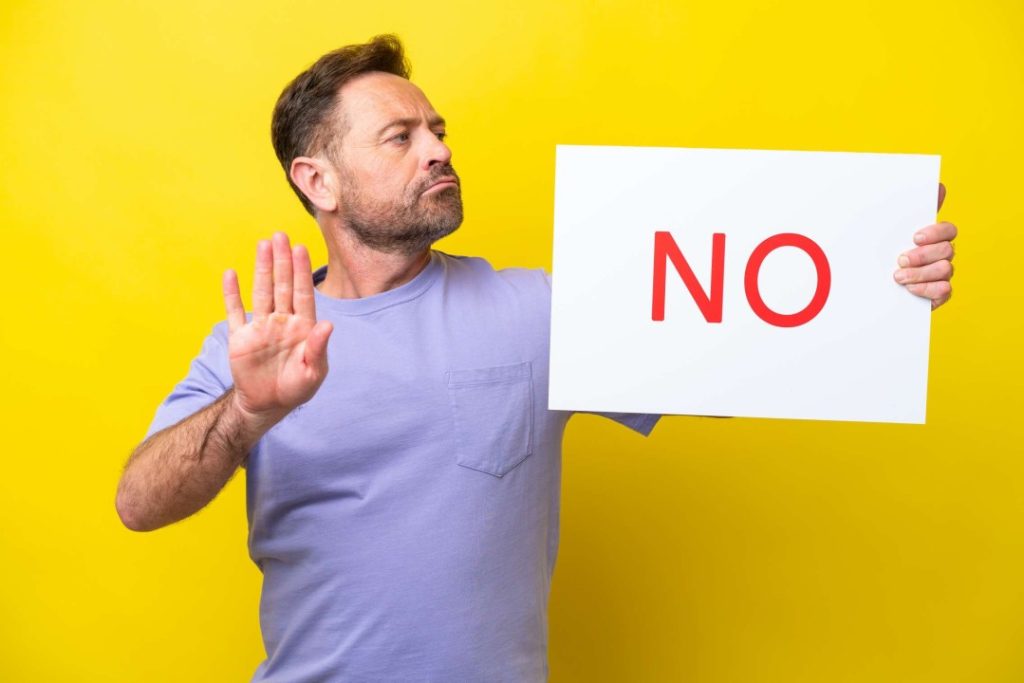The art of saying no without guilt

In a world that often equates kindness with compliance, learning to say no can feel uncomfortable or even selfish. Many people struggle to refuse requests because they fear disappointing others, being judged, or missing out on opportunities. However, saying no is not an act of cruelty — it is an essential skill for maintaining balance, self-respect, and emotional well-being. Mastering the art of saying no without guilt allows you to protect your time and energy while still being compassionate and respectful toward others.
Why We Feel Guilty Saying No

The guilt associated with saying no often comes from social conditioning. From a young age, many of us are taught to be agreeable and helpful. Saying yes is seen as a sign of politeness, teamwork, and generosity. As a result, refusing requests may trigger feelings of selfishness or fear of rejection.
Additionally, people who are empathetic or naturally people-pleasing tend to overextend themselves. They might believe that saying no will make others angry or disappointed. Over time, this leads to burnout, resentment, and even decreased self-esteem. Recognizing that guilt is a natural but unnecessary emotional response is the first step toward overcoming it.
The Importance of Setting Boundaries
Boundaries are the invisible lines that define what you are comfortable with — emotionally, physically, and mentally. Saying no is a way to protect those boundaries. Without them, you risk overcommitting and neglecting your own priorities.
Healthy boundaries help you:
- Preserve your energy: Your time and mental focus are limited. Every “yes” you give means less space for your own needs or goals.
- Improve relationships: When you say no honestly, others learn to respect your limits, and your interactions become more authentic.
- Build self-respect: Each time you stand up for your needs, you reinforce your sense of self-worth and confidence.
Remember, saying no doesn’t mean shutting people out; it means choosing when and how to engage with them in a way that feels right for you.
Practical Ways to Say No Gracefully

You don’t have to be rude or abrupt when declining a request. The key is to communicate clearly, respectfully, and without overexplaining. Here are a few strategies:
- Be direct but polite:
You can say, “I appreciate you thinking of me, but I won’t be able to help this time.” A simple, firm statement leaves little room for misunderstanding. - Use “I” statements:
Phrases like “I’m not available” or “I don’t have the capacity right now” focus on your situation rather than blaming the other person. - Offer an alternative (if you want to):
If you genuinely want to help but can’t fulfill the request, offer another solution. For instance, “I can’t join this weekend, but I’d love to catch up next week.” - Delay your response:
If you’re unsure, give yourself time by saying, “Let me think about it and get back to you.” This prevents impulsive yeses that you might later regret. - Avoid unnecessary excuses:
You don’t owe long explanations. Overjustifying your no can invite negotiation or guilt. A short, confident answer is enough. - Practice regularly:
Like any skill, saying no gets easier with repetition. Start small — decline minor favors or optional invitations — and work your way up to bigger boundaries.
Dealing with Reactions and Resistance
Not everyone will accept your no gracefully. Some people might react with disappointment or even pressure you to change your mind. In such cases, stay calm and consistent.
- Acknowledge their feelings: It’s okay to say, “I understand this might be frustrating.”
- Reaffirm your decision: Follow up with a firm statement like, “I still can’t take that on right now.”
- Don’t take it personally: Their reaction often reflects their expectations, not your worth.
Remember, you cannot control how others respond — only how you communicate. People who truly respect you will eventually adjust to your boundaries.
Reframing the Guilt
To eliminate guilt, change how you view saying no. Instead of seeing it as rejection, see it as self-care. Every time you say no to something that drains you, you say yes to something that nourishes you — rest, creativity, family time, or simply peace of mind.
Remind yourself that you are not responsible for everyone’s happiness. Being kind does not mean being available all the time. In fact, protecting your energy ensures that when you do say yes, you can give your best self without resentment or exhaustion.
Conclusion
Saying no is not a sign of weakness or selfishness — it is an act of strength, clarity, and self-respect. When you learn to decline requests with honesty and grace, you create space for what truly matters in your life. Overcoming guilt takes practice, but each small boundary you set brings you closer to a life of balance and authenticity.
In the end, the art of saying no is really about saying yes — to yourself, your priorities, and your well-being. So, the next time you hesitate to refuse something, remember: your time and energy are precious, and protecting them is not only your right but your responsibility.
